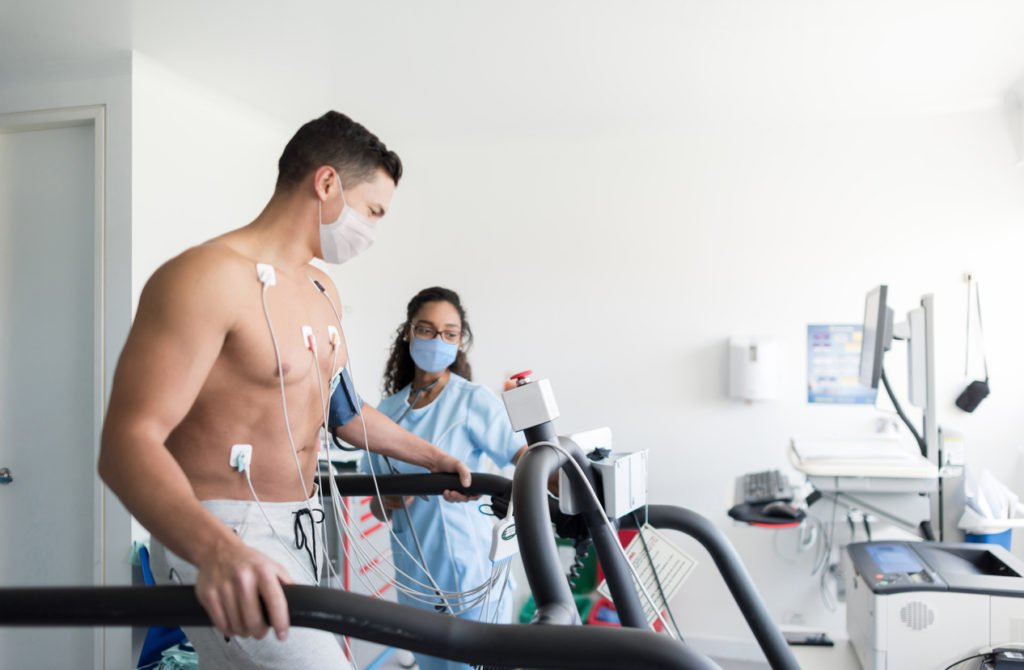Certified Medical Assistant Exam
The most basic exam that you can take after you have completed your program is the Certified Medical Assistant (CMA) Exam. This exam is offered through the American Association of Medical Assistants. One of the first requirements for taking this exam is to have completed a course that is accredited by either, the Commission on Accreditation of Allied Health Education Programs (CAAHEP), or the Accrediting Bureau of Health Education Schools (ABHES).
You must ensure you finish your course within 30 days of taking the exam. Also, do not let a year pass since you completed your program. The exam itself has 200 questions on it that are multiple-choice. Also, you must complete the exam in four segments that are each 40 minutes long. Once you complete and pass this exam, begin the process of applying to CMA jobs.
Basic Life Support
You also have the option of taking a training course for Basic Life Support after your medical assistant course. This course is offered through the American Red Cross and teaches you all about how to administer CPR, how to use an AED, critical thinking, problem-solving, and other important care techniques in an emergency situation. You have the opportunity to take the course in person, or you can take it partially online and partially in person. You can then take the exam and get your basic life support certification.
Certified Clinical Medical Assistant
If you would like to become a medical assistant that can perform clinical duties, try the Certified Clinical Medical Assistant exam. This exam is offered by the National Healthcareer Association. Passing this exam allows you to take patient vitals, assist in exams and procedures, administer injections and medications, perform laboratory procedures, and other administrative tasks. In order to take this exam, you must have completed your medical assistant program within the last 5 years. You must also have a high school diploma or GED. The exam consists of 150 questions, and you have a total of three hours to complete it.
Certified Medical Administrative Assistant
Another exam option after completing your medical assistant program is the Certified Medical Administrative Assistant (CMAA) exam. This exam allows you to function more in administrative roles as a medical assistant. The National Healthcareer Association offers this exam. In this role, you answer calls, operate computer systems, check patients in, review and update patient records, and operate a variety of software and equipment. This is a much different role than the clinical aspect of assisting. Thus, it is important that you know what your goals are before choosing which exam to take. The exam itself requires you to have completed your medical assistant program in the last 5 years. You also need a high school diploma or GED. When you take the exam, you will have 130 minutes to answer 110 questions.
Certified Phlebotomy Technician
Becoming a Certified Phlebotomy Technician is a great option once you have completed your medical assistant program. As a phlebotomist, you will draw specimens from patients. This will include venipuncture, micro-collection, and specimen processing. You can get your certification through The National Center For Competency Testing, and the exam that you will be given has 125 scored items, with three hours to complete the exam.
Specialty Certified Medical Assistant
If you would like to specialize in a specific area as a medical assistant, then you may want to become certified as a Specialty Certified Medical Assistant through The CertiTreck Group. This allows you to specialize in women\’s health, obstetrics and gynecology, pediatrics, internal medicine, family medicine, geriatrics, endocrinology, dermatology, urology, oncology, transplant surgery, orthopedic surgery, and more. Specializing in one of these areas gives you the opportunity to work in the setting that you desire.
Certified EKG Technician
If interested in the heart, consider becoming a Certified EKG Technician (CET). You can become certified through the National Healthcareer Association. As a CET, you test the electronic activity of the heart using electrode patches attached to a person\’s body. Aside from administering EKGs, you also administer stress tests, prepare patients for ambulatory monitoring, edit and deliver final tests results to physicians, schedule appointments for patients, and transcribe physicians\’ interpretations of the final tests for medical records. To become a CET, you need to take a 2-hour exam at a proctored testing facility.
Conclusion
No matter what your goals are after you finish your medical assistant program, you can reach them. You have so many great options as to what specialties, certifications, and which exams to take. It is also great to know that you have options when it comes to your future as a medical assistant. If you would like to learn more about the medical assisting program and what you can expect, visit us today at Southern Careers Institute.











